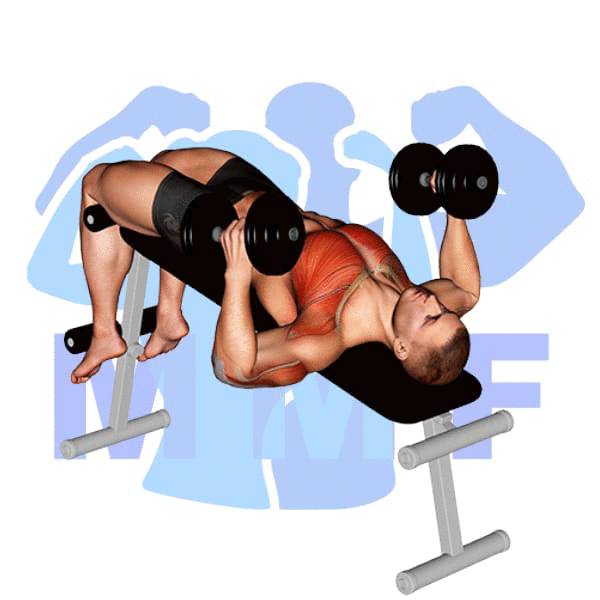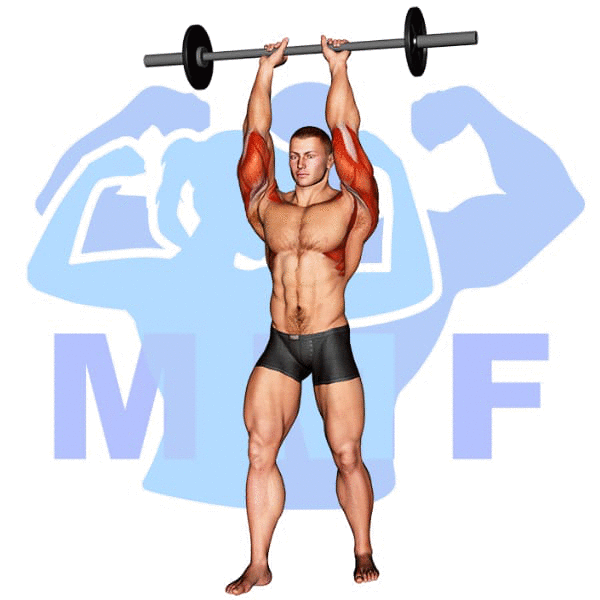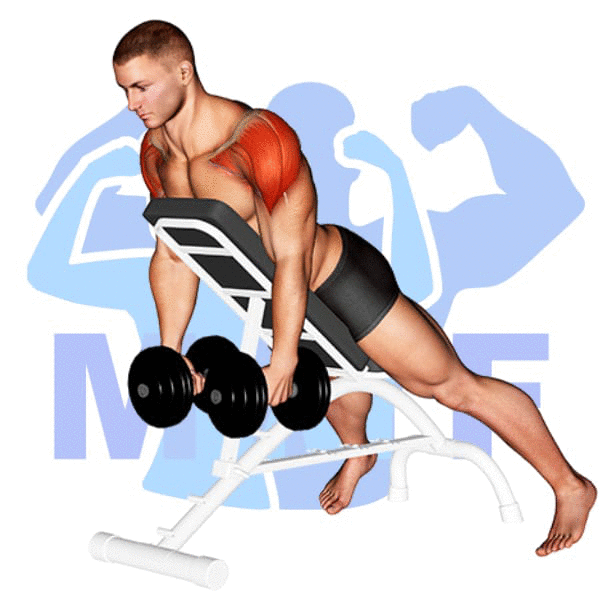Are you struggling to find an exercise that effectively targets your glutes, hips, and hamstrings? Look no further than the barbell lateral lunge. Many fitness enthusiasts find that traditional posterior chain exercises like squats and deadlifts just aren’t cutting it when it comes to building the hips and glutes. However, this issue is common and there’s no need to feel discouraged. The barbell lateral lunge provides an excellent solution for those looking to strengthen these key muscle groups. In this blog post, we’ll be diving into the benefits of the barbell lateral lunge, how to perform it correctly, and tips for incorporating it into your workout routine. Let’s get started.
Barbell Lateral Lunge Summary
- Primary Muscles: Gluteus Maximus
- Secondary Muscles: Adductor Magnus, Quadriceps, and Soleus
- Equipment: Barbell
- Mechanics Type: Compound
- Force: Push
- Utility: Basic or Auxiliary

Barbell Lateral Lunge Instructions
- Position the barbell on the back of your shoulders and grasp the bar to sides.
- Start by standing straight upright.
- Next, lunge to one side with your first leg. Landing on your heel.
- Then, lower your body by flexing your knee and hip of your lead leg, keeping your knee pointed the same direction as your foot.
- Press back up to the starting, standing, position by forcefully extending your hip and knee of your lead leg.
- Finally, repeat by alternating the barbell lateral lunge with each leg.
Video Tutorial
Barbell Lateral Lunge Muscles
Target (Agonist)
Synergists
- Adductor Magnus
- Quadriceps
- Soleus
Dynamic Stabilizers
Stabilizers
- Erector Spinae
- Gluteus Medius
- Gluteus Minimus
- Levator Scapulae
- Obliques
- Pectineus
- Quadratus Lumborum
- Sartorius
- Tensor Fasciae Latae
- Tibialis Anterior
- Trapezius – Middle
- Trapezius – Upper
Antagonist Stabilizers
- None

Benefits of Barbell Lateral Lunge
The Barbell Lateral Lunge is an excellent exercise for targeting and strengthening the Gluteus Maximus. This exercise helps to improve hip mobility, as well as stability and balance. Additionally, it provides an effective way to build strength in the lower body and increase power in the glutes. By performing the Barbell Lateral Lunge, you can isolate and target the glutes more effectively than other lower body exercises. This makes it a great choice for those looking to increase strength and size in their glutes.
Tips for Performing Barbell Lateral Lunge
The Barbell Lateral Lunge is a great way to tone and strengthen your legs, glutes, and core. To get the most out of this exercise, it is important to use proper form and technique. Below are a few tips to ensure you are getting the most out of your Barbell Lateral Lunges.
- Establish Your Form Prior To Raising The Load. getting proper technique will certainly support preventing personal injury and failing early on. Quality Form will aid you to grow muscle quickly.
- You Need A Plan In Case You Aren’t Able To Finish Your Final Repetition. This approach is primarily significant for bench and squats, different from deadlifts where you can just put the bar on the floor, you are under the bar and the floor. The preferred plan is to have a partner and safety bars. When you may not have either you may lift without using plate collars in order that you can drop the plates if necessary. However, this might get you unwelcomed at your desired gym.
- Make sure you have warmed up your muscles before you start lifting.
- Keep Your Abs Tight. For most exercises, you should reinforce your backbone by flexing your abs to strengthen your inner pressure around your backbone.
Benefits and Tips Video
Frequent Mistakes To Avoid
Before we get into the mistakes you should avoid when doing the Barbell Lateral Lunge, it is important to note that this exercise is an excellent way to tone your legs and build strength. When done correctly, it can help you achieve your fitness goals quickly. However, it is important to be aware of the common mistakes people make so that you can avoid them and get the most out of your workout.
- You’ll Do Better To Not Trai Solo. A partner is often an incredible motivator. A partner may be valuable spotter.
- Avoid Using To Little or Too Much Resistance. Too little, and you will not be sufficiently employing your main muscles, a large amount, and you will likely need to cheat. Make certain you concentrate on your technique.
- Don’t employ inadequate form. Incorrect form is certainly a fast way to have a physical injury.
Find More Barbell Exercises Here
Variations and Complementary Exercises
If you’re looking to add some variation to your Barbell Lateral Lunge routine, here are a few alternative exercises that will help you work the same muscles:
Barbell Rear Lunge

The Barbell Rear Lunge is a great complementary or alternative exercise for the Barbell Lateral Lunge. It works the same muscle groups, but with a different motion. This exercise involves stepping back with one foot while keeping the weight on the other and then stepping forward to the starting position. This exercise not only strengthens the legs, but also helps to improve balance and coordination. It is a great way to increase leg strength and mobility, while also providing an effective cardio workout.
Barbell Reverse Lunge

The Barbell Reverse Lunge is a great complement or alternative exercise to the Barbell Lateral Lunge. It involves stepping backward with one foot while keeping your torso upright and lowering the opposite knee towards the ground. This exercise targets the glutes, quads, and hamstrings, while also strengthening the core and lower back muscles. The Barbell Reverse Lunge can be used to increase the challenge of the Barbell Lateral Lunge by adding weight and increasing the range of motion. The added challenge will make you work harder, thus increasing strength and stability throughout your entire body.
Barbell Walking Lunge

Barbell Walking Lunge is a great alternative or complementary exercise to Barbell Lateral Lunge. It is an effective lower body exercise that targets the quads, glutes, and hamstrings. Unlike the lateral lunge, barbell walking lunge requires you to move forward as you perform the exercise. This forward movement places more emphasis on the glutes, hamstrings, and quads, which allows for more muscle activation. Additionally, barbell walking lunge is an ideal exercise for those looking to increase their overall lower body strength and power. It also helps to improve balance and coordination by forcing you to stabilize your body as you move with the weight. With regular practice, barbell walking lunge can help to improve your overall lower body strength and performance.
Check Out These Top Barbell Exercises
Dumbbell Lunge

The Dumbbell Lunge is an effective alternative or complementary exercise to the Barbell Lateral Lunge. It is an isolation exercise which targets the muscles in the lower body, specifically the quads, glutes, and hamstrings. The Dumbbell Lunge requires a single dumbbell, which can be held in the hands or rested on the shoulders. It is a simple exercise to perform; simply stand with your feet hip-width apart, hold a dumbbell in each hand, and then take a large step forward with one leg while bending both knees to lower your hips. Drive through your heel to return to standing position and repeat on the other side. This exercise will help to improve balance and stability, as well as strength and power.
Dumbbell Rear Lunge

The Dumbbell Rear Lunge is a great complementary or alternative exercise to the Barbell Lateral Lunge. This exercise focuses on strengthening the quadriceps, hamstrings, and glutes while also engaging the core and improving balance. To perform this exercise, stand with feet together and hold a dumbbell in each hand. Step back with one foot and lower into a lunge position until your back knee nearly touches the floor. Return to the starting position and repeat on the other side. This exercise is an excellent way to strengthen the lower body, improve balance, and build stability.
Dumbbell Walking Lunges

Dumbbell Walking Lunges are a great complementary or alternative exercise to the Barbell Lateral Lunge. This exercise targets the same muscles as the Barbell Lateral Lunge, but with a slightly different form. To perform Dumbbell Walking Lunges, stand with feet hip-width apart and hold a pair of dumbbells at your side. Step forward with one leg, flexing your knee and hip to lower your body toward the floor. Keep your torso upright and core engaged, and press through your front heel to stand back up. Step forward with the opposite leg and repeat. This exercise is a great way to increase muscular strength, muscular endurance, and joint stability, while also improving balance and coordination.
Find More Glutes Exercises Here
Opposing Complementary Exercises
In order to maximize the effect of the exercise Barbell Lateral Lunge, it is important to also work the opposing muscle groups. This will ensure that the body remains balanced and symmetrical. Below are some exercises that will help target the opposing muscle groups in order to achieve this balance.
Dumbbell Romanian Split Squat

The Dumbbell Romanian Split Squat is a great complement to the Barbell Lateral Lunge. It targets the same muscle groups as the lateral lunge, but in an opposing motion. By working the opposing muscle group, you can achieve better balance and stability. The Romanian Split Squat requires you to balance on one leg while you lower yourself down and back up, while the Lateral Lunge requires you to move your body in a lateral motion. Both exercises work the quadriceps, hamstrings, and glutes but in different ways, creating a balanced workout.
Barbell Side Split Squat

The Barbell Side Split Squat is an excellent complement to the Barbell Lateral Lunge. This exercise works the quads, glutes, and adductors on the outside of the hips. It also strengthens the abductors on the inside of the hips, which are the opposing muscle group to the Barbell Lateral Lunge. The Barbell Side Split Squat helps to balance out and strengthen both sides of the body in order to increase overall stability and performance.
Sled One Leg Hack Squat

The Sled One Leg Hack Squat is a great exercise to compliment the Barbell Lateral Lunge. This exercise focuses on the quads and glutes, while the Barbell Lateral Lunge focuses more on the hamstrings and glutes. This makes the two exercises complementary, as they both target different muscle groups. The Sled One Leg Hack Squat also provides an extra challenge for the quads by having to work against the resistance of the sled. This helps to build strength and balance in the lower body, making it a great addition to any leg workout.
Sculpt Your Glutes and Thighs with Barbell Lateral Lunge
If you’re looking to sculpt your glutes and thighs, incorporating barbell lateral lunges into your workout routine can be a game changer. This exercise targets the muscles on the side of your thighs and hips, helping to tone and tighten those trouble spots. By holding a barbell across your shoulders, you add an extra challenge to the movement, helping to boost your strength and endurance. With proper form and consistency, this exercise can help you achieve the lean, sculpted legs you’ve always wanted.
References: Wikipedia | ExRx.net | PubMed.gov | Comprehensive List of Glutes Barbell Exercises




